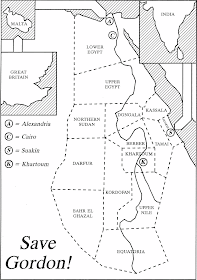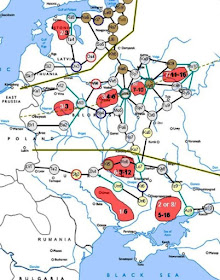Last Thursday – as part of London History Day – the Royal Hospital Chelsea – the home of the famous Chelsea Pensioners – staged a special event that was open to the public. Sue and I booked a place and spent the afternoon there.
Our journey began with a short trip to Woolwich on the local bus. We alighted almost outside the entrance to Woolwich Arsenal Station, and as a mainline train to Cannon Street was just arriving as we reached the platform, we caught it. It took thirty minutes for us to reach the centre of London, and after a short discussion about how to get from Cannon Street to Chelsea, we took a Circle/District Line underground train to Sloane Square, the closest station to the Royal Hospital.
By the time we re-emerged into the daylight at Sloane Street Tube Station, it was lunchtime. As we only wanted a snack lunch, we took a walk along the King's Road to find somewhere to get a drink and a sandwich. After only walking a few hundred yards we came to Partridges in Duke of York Square, a grocers and delicatessens that also has a café.
Although all the outside tables were taken, the inside was fairly empty, so we ate there ... and although it wasn't cheap (which was hardly surprising at we later discovered that Partridge's holds a Royal Warrant and supplies groceries to the Queen!) it was excellent.
It took less than ten minutes to walk from Partridges to the London Gate of the Royal Hospital Chelsea. The gatekeeper directed us to a small entrance at the northern end of the East Wing, and after having our tickets checked, we were admitted into the room where Keith Collman's photographs of World War One veterans entitled
Great War Portraits were on show.
A selection of photographs and captions from the collection
The room also contained a number of displays that told the stories of Chelsea Pensioners, including one that featured survivors of the Battle of Waterloo ...
... and another that showed a modern Pensioner unveiling a commemorative plaque at Victoria Station.
We then moved into an adjacent room where we were treated to a short introduction to the history of the Royal Hospital that was told to us by a wonderfully charming (and very funny) Pensioner.
At 3.00pm author and illustrator Robin Ollington recounted the stories of some of the forty Chelsea Pensioners has had interviewed over the years for a series of biographical books that he has produced entitled
Before they fade. It was supposed to last thirty minutes, but he was so engrossing that the time sped by, and by the time he had finished, over forty-five minutes had passed.
Sue and I then joined a group that were conducted on a short tour of the Chapel and Dining Hall. This was led by the Pensioner who had talked to use earlier and was very informative.
The Chapel
The Dining Room
Once our tour was over, Sue and I made our way back to the London Gate. Along the way we passed one of the 'There but not there' statues that were created to mark the centenary of the First World War ...
... before paying a visit to the Royal Hospital's Old Burial Ground.
The Burial Ground contains many unmarked graves, including one of Sue's ancestors.
Adjoining the Burial Ground is the Margaret Thatcher Infirmary, which was completed in 2009 and that serves as an onsite hospital and care facility for Pensioners.
Lady Thatcher donated £1,000,000 to the fund for its construction (she used to attend the Royal Hospital Chapel every week for the Sunday service after she retired from office) and her ashes and those of her husband – Sir Denis Thatcher Bt. – are buried in the Burial Ground close to the Infirmary ...
... and near a memorial to all the Pensioners who have lived at the Royal Hospital.
Once our visit was over, Sue and I walked back to Partridges for some tea before taking a Circle/District Line underground train from Sloane Square to Tower Hill, where we changed to the Docklands Light Railway. This took us back to Woolwich Arsenal Station, where we took a taxi back to our house. We finally arrived home just before 7.00pm having had a very enjoyable day out.
































































